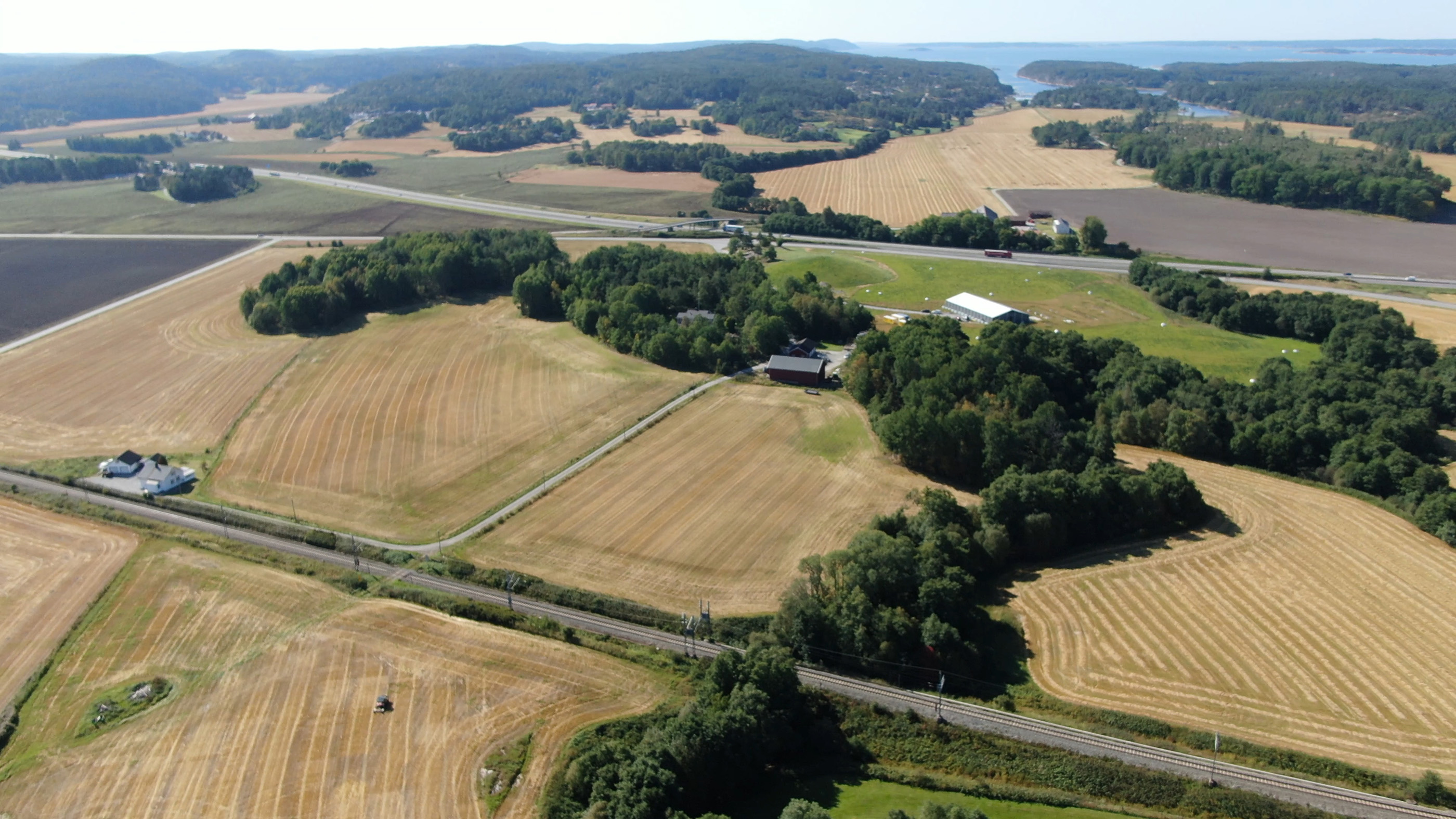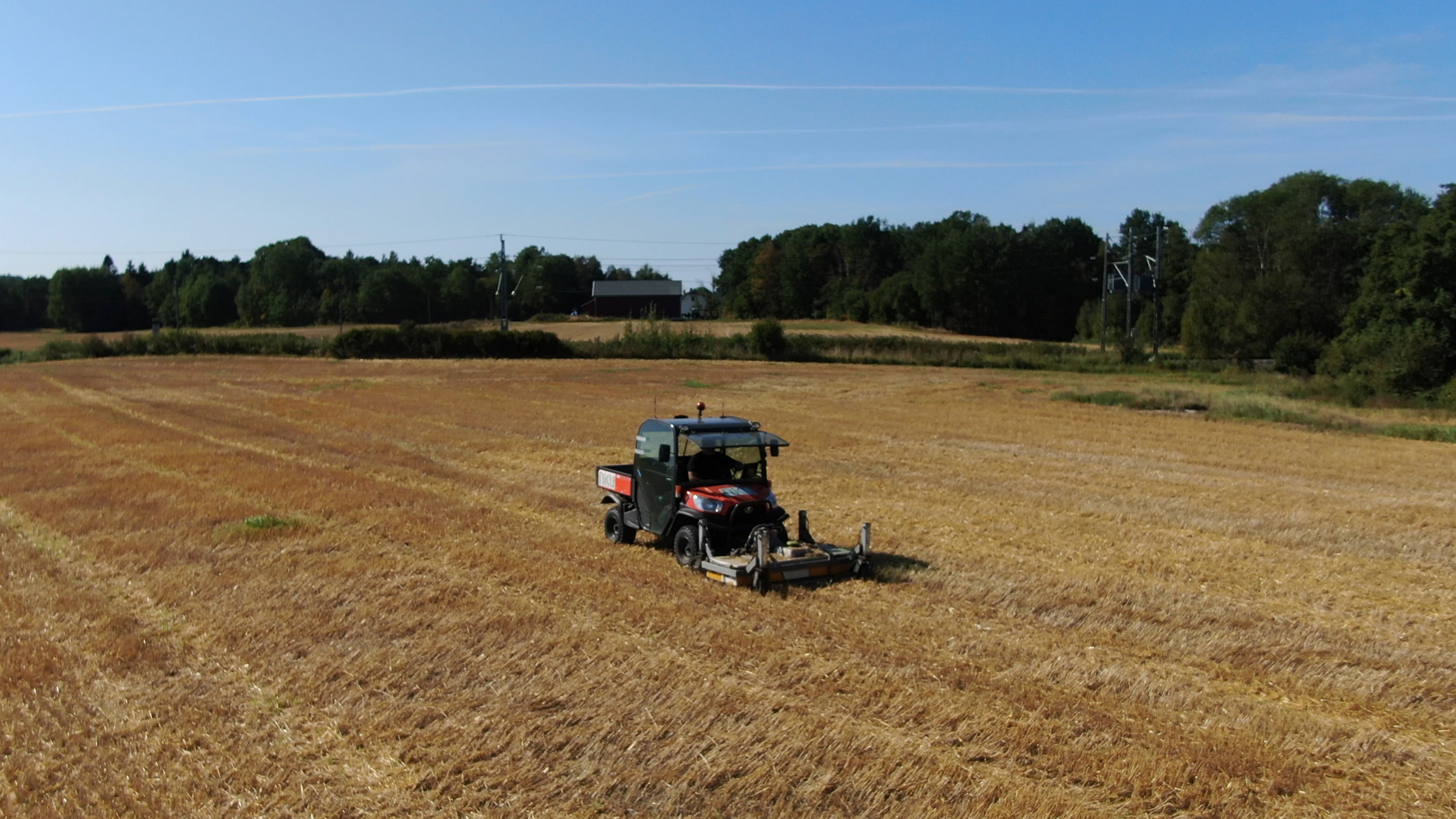One of the largest-known Norse longhouses discovered near Viking ship burial
The huge longhouse was likely used as a ceremonial hall during the Iron Age.

Archaeologists in Norway have discovered the remains of a cluster of Norse longhouses, including one of the largest of these structures ever found.
The investigations of farmland at Gjellestad, in southern Norway about 50 miles (85 kilometers) southeast of Oslo, have revealed the underground remains of at least five longhouses. The buildings were about 1,640 feet (500 meters) northeast of a Viking ship burial discovered in 2018 with radar scans, according to a statement by the Norwegian Institute for Cultural Heritage Research (NIKU).
Archaeologists haven't dated the buildings yet, but the ship burial nearby is thought to be from the late Iron Age in the region, about A.D. 750 to 850.
Related: Fierce fighters: 7 secrets of Viking seamen
The largest of the uncovered longhouses is almost 200 feet (60 m) long and 50 feet (15 m) wide. Lars Gustavsen, an archaeologist at the Norwegian Institute for Cultural Heritage Research (NIKU) who made the discovery with ground-penetrating radar (GPR), thinks the longhouse probably wasn't inhabited but rather served as a ceremonial hall.
"The most plausible interpretation of the house is as a hall-building that was used for religious, social or political purposes, and not for human or animal occupation," Gustavsen told Live Science in an email.
It's not yet known if the buildings predate the ship burial. "A similar house was excavated nearby some years ago, and that predated the Viking Age by several hundred years," he said. "If we get similar dates for the newly discovered houses, we can at least assume that Gjellestad was an important place for several centuries."
Sign up for the Live Science daily newsletter now
Get the world’s most fascinating discoveries delivered straight to your inbox.



Viking ship
The nearby Viking ship, which measures more than 60 feet (19 m) long and about 16 feet (5 m) wide, was found in a burial mound flattened by decades of plowing. Roughly 20 other graves were found nearby, and about 360 feet (110 m) to the southeast lies the Jell Mound, the second-largest burial mound in Norway, which dates to between A.D. 400 and 500.
Archaeologists think the ship once held the body of a Norse king or queen, although no human remains were discovered there.
Previous GPR scans, which can show buried objects and where the ground has been disturbed in the past, also revealed several other burial mounds at the site and structures that may have been used in rituals, Live Science previously reported.
Gustavsen said it seemed likely that people would have lived in the smaller longhouses that were discovered recently, although only archaeological excavations, which are planned for next year, can reveal what these structures were used for.
Norse lands
If dating technology reveals that the buildings predate the burials, the location of Gjellestad itself, about a mile from the sea, could hold clues as to why it became such an important site.
"It is a rich landscape in terms of access to natural resources," Gustavsen said. "Also, they [the buildings] are situated near old transport routes in the landscape that provided control over the movement of people and trade goods."
The latest investigations, which are focused on about 100 acres (40 hectares) of farmland around the ship burial, are now part of a major research collaboration among archaeologists, historians and other specialists investigating the development of the Gjellestad site, from the beginnings of the Nordic Iron Age around 500 B.C. until the start of the Viking Age in about A.D. 800.
The latest GPR scans have also revealed several more "plowed-out" burial mounds, which support the idea that at least some portions of the site were part of an important cemetery.
Originally published on Live Science.
Tom Metcalfe is a freelance journalist and regular Live Science contributor who is based in London in the United Kingdom. Tom writes mainly about science, space, archaeology, the Earth and the oceans. He has also written for the BBC, NBC News, National Geographic, Scientific American, Air & Space, and many others.









